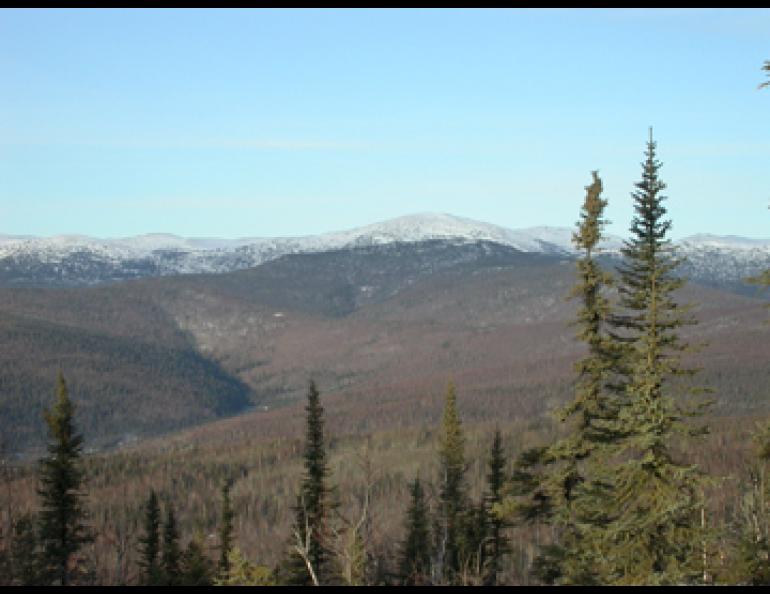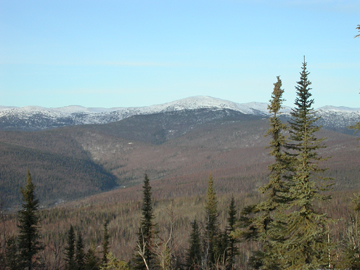
Temperature inversions go to extremes
OHydrologist Ed Plumb of the National Weather Service in Fairbanks was out measuring ice thickness on the Chatanika River last week. On his drive to a valley north of Fairbanks, he kept his eye on an outdoor thermometer attached to the truck.
As he crested Cleary Summit, the thermometer read 44 degrees Fahrenheit. He watched the temperature drop as he descended toward Chatanika Lodge, where the thermometer read minus 2 degrees. That temperature difference, caused by an extreme temperature inversion, occurred over a distance of about seven miles when Plumb dropped from a height of about 2,200 feet on the hilltop to 713 feet at the valley bottom.
Temperature inversions — where air temperature increases with elevation — happen in calm, windless places such as Interior Alaska. With no wind to mix the atmosphere, not much sunlight to heat the surface and a snow-covered surface that reflects sunlight, cold air tends to pool in low places and stay there. Fairbanks often has temperature inversions — that’s what makes car thermometers so much fun here — but the ones on the last two days of January 2007 were exceptional.
“Temperature inversions are not that unusual, but to have a 45-to-50 degree temperature inversion, that’s pretty extreme,” Plumb said.
Plumb’s colleague Ron Stuvek drove the Elliott Highway the day after Plumb. Stuvek saw an even greater temperature spread, from 40 above at Wickersham Dome to 8 below at the Chatanika River.
“That’s 50 degrees of change within the inhabited elevations of the Interior,” said Eric Stevens, who was working in the National Weather Service office in Fairbanks that day. “You don’t see stronger inversions than that.”
On the same day meteorologists noticed that a weather balloon launched from Fairbanks International Airport recorded at temperature of 12 degrees C (about 54 degrees F) at about 5,000 feet.
“That would be warm even for summer,” said Stevens, who was working in the office that day. “Not only was that a record for the last day of January, but this is the warmest temperature measured at 5,000 feet for the six months of November through April since weather balloons began being launched in Fairbanks in 1948.”
It was a warm day up higher, too. The weather station at 18,733 feet on Denali, maintained by Tohru Saito of the International Arctic Research Center and mountaineers of the Japan Alpine Club, recorded a temperature of minus 2 degrees F that day. Two degrees below zero is a typical temperature for a nice summer day up there on the mountain. Within two days, the temperature at Denali Pass had dropped to a more seasonable minus 36.
The reason for this warm air aloft was the “pineapple express,” the south-to-north flow of air that brought warm air from around Hawaii northward to Alaska, Stevens said. That airflow also causes chinook winds in Interior Alaska to further amplify the warming. A big low-pressure system sitting south of the Aleutians drove the pineapple express, making for warm temperatures throughout much of Alaska.
Fairbanks temperature inversions are so consistent that meteorologist Rick Thoman, also of the Fairbanks office of the National Weather Service, once calculated how much firewood he saved by living in the hills west of town.
He lives at about 1,600 feet elevation, and he compared his average temperatures with those of a Weather Service observer who lived at 590 feet. In one winter, his home averaged 16 degrees warmer than the low site. Thoman figured that, thanks to Fairbanks’ persistent temperature inversion, he burned 20 percent less wood by living up high.





